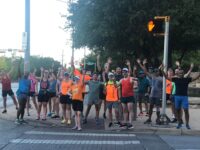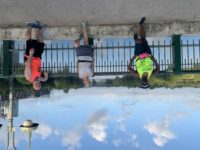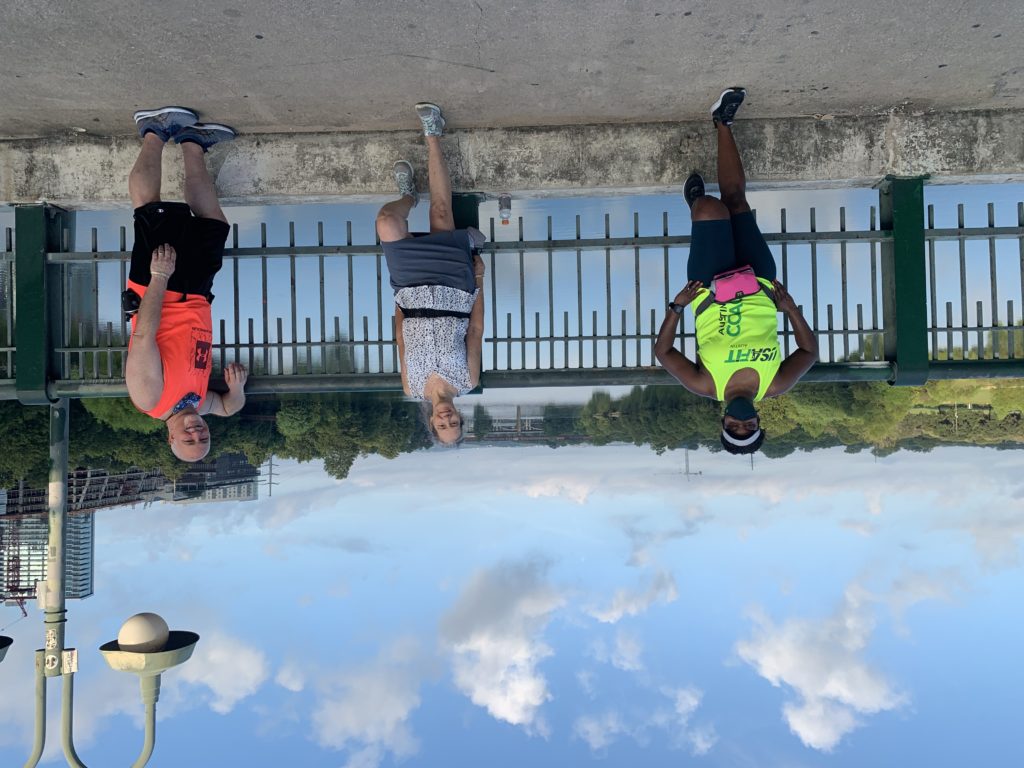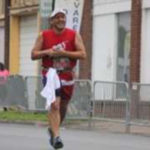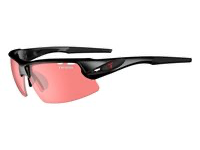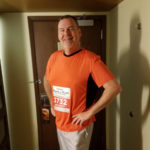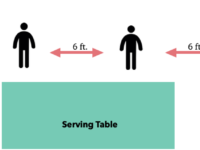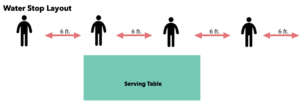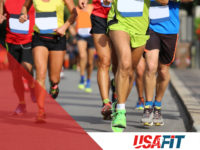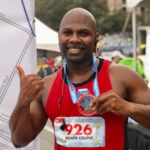The safety of our members is the primary goal of our Austin Fit program.

by Austin Fit Running and Walking
Safety Issues
The safety of our members is the primary goal of our Austin Fit program. By far the most important part of our program is that we do everything possible and reasonable to keep our members healthy and safe. Finishing a marathon or achieving a certain time goal is secondary. The most important step in staying safe is being aware of, and staying alert to, potential dangers. Potential dangers include vehicular traffic on roads where vehicles are going to win in any collision between a runner/walker and the vehicle. Other dangers range from weather conditions especially in places where the weather is volatile and can change quickly to people being aggressive on the streets.
General Safety Tips
- Whenever possible train with another person.
- Be aware of your surroundings. If you wear headphones, keep the volume low enough to be aware of your surroundings.
- Train during times of good visibility.
- Vary your training routes to avoid a regular pattern.
- Let someone know where you are going and how long you expect to be gone. Contact that person when you complete the run or walk.
- Consider carrying your cell phone and/or safety devices such as whistles, pepper spray, etc.
- Always wear your ID tags. We have them onsite. Please get one if you don't already have one.
Visibility
Lack of visibility is another safety risk that walkers or runners should consider. Visibility is always important, but especially in the morning or evening when lighting is poor and drivers may be tired and paying less attention. Visibility becomes an even greater concern in the winter months when runners may be out before sunrise or after sunset. We recommend that our members wear brightly colored clothing such as white or fluorescent colors on their runs or walks so they are more visible. Dark colors make a person much more difficult to see in low-light conditions. In very low light situations, clothes with reflective built-in to them or reflective vests are recommended. Reflective tape is available that can be put on clothing. Some runners also clip a small flashing LED light to the backside of their clothing as another way to increase visibility.
Not only is it important for others to be able to see you, but it is important that you be able to see to avoid dangers like holes or damaged sidewalks. Carrying a flashlight or wearing a headlamp provides illumination while also adding to the runner’s visibility to others.
ID Tags
We recommend that all of our members wear their ID tags on their training shoes for several important reasons:
- If a member should get injured on the course, his/her ID tag will let medical authorities know who the person is and whom to contact.
- If the runner has allergies or other important medical conditions, they can be listed on the ID Tag. This is important under any circumstance but especially important while traveling. Providing accurate medical information can save precious minutes during an emergency which can mean the difference between life and death.
Risks in Urban Areas
Living and training in a large town or city poses some unique safety risks. Some risks a person may encounter in an urban area include:
Traffic – We must make sure all groups are traveling against the flow of traffic, no more than 2 abreast and on sidewalks or other pathways designated for bike or pedestrian traffic. They also all need to obey the traffic laws including crossing at cross walks and at lights. It is easy to forget to look both ways before crossing each street especially in the latter miles of a long run when fatigue has set in. It is easy to step out in front of a motorcycle or bicycle as both may be less visible than a car or a truck. Running along busy streets is particularly dangerous; for this reason, choosing routes that minimize busy streets is recommended. Look for routes near less-traveled areas, away from traffic such as in parks or around lakes. Dogs – Runners are more likely than walkers to trigger a dog’s natural hunting instinct to pursue a fleeing prey. Therefore, a runner may be able to stop a dog from chasing him/her by slowing to a walk, crossing to the other side of the road, and/or acting as non-threatening as possible.
Pollution – While not an immediate safety issue for most people, the long-term effects of training in highly polluted areas can be severe. For this reason it is usually better to train in the morning or in the later evening in areas of high air pollution. Pollution levels tend to climb during the day and decrease somewhat overnight. For the group runs, Organizers should keep abreast of air quality alerts and plan accordingly. For some runners, high particulate counts such as allergens or pollution in the air can trigger respiratory attacks. Encourage those with respiratory issues to have their medications available to them during a run. For some this might involve carrying a “rescue” inhaler.
Attackers – Running with partners, and staying alert to one’s surroundings can greatly reduce a person’s risk of being attacked. One should always be aware of his/her surroundings and the possibility for physical assault. Running with headphones decreases one’s ability to hear someone approaching. Women may want to be especially careful not to run alone and not to run with headphones. Some members may want to invest in pepper spray and/or a whistle to improve his/her chance of escape should an attack occur.
Risks in Rural Areas
Rural areas present some of the same safety issues as urban areas, but they may also offer their own risks:
Narrow roads with no sidewalks or shoulders – While there may be more traffic in the city, there are usually sidewalks available. In rural areas country roads can be narrow often with no shoulders and no sidewalks. Running or walking in these areas requires great attention to the traffic and your environment. It is advisable, and in most cases the law requires you, to walk or run facing oncoming traffic so you can see approaching vehicles and, if necessary, step off the road to stay out of their way.
Dogs –Dogs were mentioned above, but a common experience is that country dogs can be more troublesome than city dogs. Perhaps country dogs are less used to seeing runners, or city dogs have spent more time in charm school. In any case, take care in running any new route in a rural area. Country dogs may also not be restrained.
Wild animals –The more remote the location, the greater the potential risk of wild animals. It is important for runners and walkers to know their environment or train with someone who does. This is especially important when on vacation or traveling to a new area. Wild animals are much less likely to approach a group than an individual. Many animals are more active at dawn or dusk as well.
Distance from help should a problem arise – Running in remote areas can be peaceful and invigorating, but it may be wise to carry a cell phone. It is always advisable to let someone know what route will be taken and when the person expects to return. Modern technology may help here as well. If the runner is carrying a cell phone, someone may be able to track the cell phone location. For instance, the Apple iPhone® has a function that will allow someone to find the phone.
Training in Unfamiliar Places
Whenever preparing to run or walk in an unfamiliar area, such as when traveling on business or vacation, there are a number of things a person can do to increase his/her safety:
Check with a local running or walking club (such as another USA Fit group or RRCA club). They can recommend a safe route and perhaps even provide training partners. Needless to say, be wary of running with strangers.
Check with the local running store. They might have a group to run with.
When traveling, ask the concierge at the hotel – they will tell you if the area is safe to train in, and if so, can often provide route maps and suggestions. Keep in mind that the concierge might send you off to a place that he/she thinks is good for running but might not realize that the one mile loop is not really what you are looking for!
It is important to tell someone the route being taken and how long you expect to be gone.
Always wear ID tags.
Consider taking a cell phone along on the walk or run for quick access to help if needed.
Take some cash or a credit card in case you need to take a cab or public transportation back to where you are staying.
Training on Trails or Paths
And finally, while trail walking or running is in many ways much safer than training in most other areas, it too can present unique safety hazards. If training on a path in an urban area, such as a paved “hike and bike” trail, you should be especially watchful of cyclists and roller bladers. Because of their speed, and relatively quiet operation, cyclists and roller bladers can easily overtake and surprise walkers and runners especially on winding, wooded trails.
On rural or mountain trails, mountain-bikers, motorcyclists or snowmobilers can be a major safety hazard as they usually travel at much higher rates of speed; some motorcyclists and mountain bikes have adopted the attitude that these are “their trails”. No matter what type of trail you choose to train on here are some important safety tips:
- always stay to the far right of the trail
- never walk or run more than 2 abreast
- stay single-file on narrow trails to allow ample room for passing
- keep your eyes and ears open for others sharing the trail with you
- stay on the trail itself!
On wilderness trails, runners/walkers (and cyclists) always yield to horses. Cyclists should yield to runners/walkers. The tricky part is what to do when two people encounter each other on a trail. Generally, the faster person should be allowed to go. So if you are both ascending, let the faster runners/walkers pass; the same would apply for descending. What happens if person A is ascending and person B is descending? One recommendation is for the descending person to step aside as it takes more energy to go uphill. Also, the person descending may likely see the ascending person first and be able to step aside easier. Of course, step aside in a safe place. However, it is not unusual for the ascending person to step aside and take a little breather and wave the descending person on.
(Note: if a cyclist is approaching from behind and overtaking you, then it makes perfect sense to let the cyclist pass just as you would a faster runner/walker. It is also not unusual that if you are heading uphill and a cyclist is descending for you to step aside and let the cyclist pass. It can be tough for a cyclist to stop safely on a descent.
